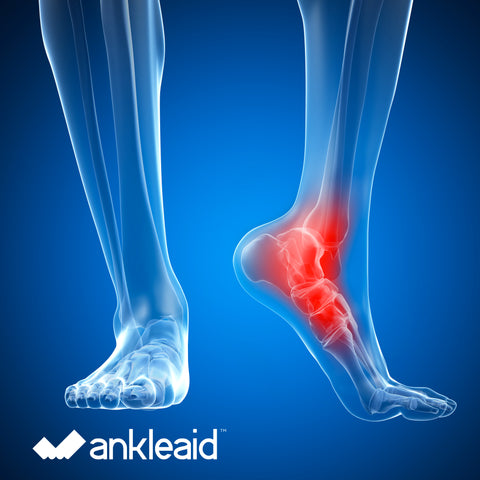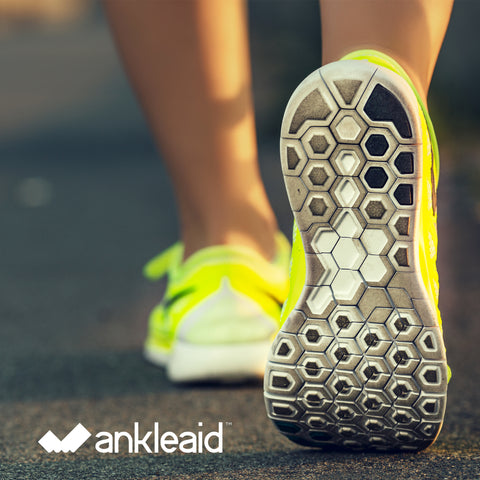The Ankleaid is the perfect ice bath for universities to have in their athletic departments to treat ankles. And, if you have several of them on-hand, you can treat multiple athletes at the same time. Plus it's portable so the athlete can take it home for treatment, which is critical to ice multiple times throughout the first 72 hours of an acute injury.
Here's what John J. Kasic MS ATC Cped, Associate AD/Sports Medicine at the University of South Carolina/Gamecocks Sports Medicine Department, has to say:
"I wanted to drop you a note to let you know how much our athletes and staff appreciate the Ankleaid. It works beautifully in getting the ankle and foot area iced while keeping the toes out of the frigid temperatures! We also use it for elbows pretty effectively. Every athletic training room has a few and they get used every day. Thank you again for bringing this tool to our attention. We’ll be ordering more soon."


Tissue treated in cold-water immersion remains cooler significantly longer which translated means a better therapeutic treatment. However, patients tend to have an aversion to full foot immersion because of the cold discomfort to the toes (personal clinical experiences). The most common method of reducing the toes discomfort is to apply a ‘toe cover’, which reduces the amount of cold water reaching the toes, but many patients still prefer ice bags. The AnkleAid is a single foot cold-water immersion device, which features a preformed area for placing the injured foot, which ensures a 360 degree cold-water immersion and keeps the toes out of the water for patient comfort. The application of cryotherapy ranges from acute injury (e.g. ankle sprains), gout, malleolar fractures, rheumatoid arthritis, plantar fasciitis, achilles tendonitis post surgical and post rehabilitation therapy.
This post was contributed by Professor Lennart Johns at Quinnipiac University.

A recent report by Rupp, etal. (2012) compared the cryogentic effects of crushed ice bag versus cold water immersion. The results demonstrate that both methods work equally well in decreasing tissue temperature and there was no statistical difference in the amount of time required to cause a decrease of 8 degrees Celsius. The significance of this study lies in the time required for the tissue to return to normal temperature. Specifically, the tissue that was cooled via cold-water immersion remained cooler significantly longer, which translated clinically, suggests that cold-water immersion would decrease the amount of secondary cell injury as compared to ice pack applications. The longer rewarming time is likely due to cooling the tissue 360 degrees around the entire limb as compared to the ice bag application, which cools unidirectional (Rupp etal, 2012). This entire limb cooling becomes important especially in the acute ankle injuries; because many moderate to severe lateral ankle sprains result in soft tissue on the medial side of the ankle.
This post was contributed by Professor Lennart Johns at Quinnipiac University.

The use of cryotherapy is considered the standard of care for acute injury across the medical field. The primary physiological goals when using cryotherapy is to decrease tissue temperature, which in turn decreases cellular metabolism, the utilization of anaerobically produced ATP, lactic acid concentrations and secondary cell injury. Clinically, the decrease in secondary cell injury translates to a decrease in the extent of the injury and a quicker recovery, return to daily activities and work. The application of cryotherapy ranges from acute injury (eg. ankle sprains), gout, malleolar fractures, rheumatoid arthritis, plantar fasciitis, achilles tendonitis post surgical and post rehabilitation therapy.
This post was contributed by Professor Lennart Johns at Quinnipiac University.

AnkleAid can be used by athletes for recovery from fitness injuries and is an affordable way to treat sprained ankles, plantar fasciitis, Achilles injuries and a host of other foot/ankle issues. For people with chronic pain, AnkleAid can be used to help alleviate this through ice and heat therapy, and help you lead a more fulfilling and relatively pain free life. The AnkleAid is able to provide both cold and hot therapy, so it’s an all-in-one solution for certain foot and ankle issues.

From the minute you wake up and take that first step out of bed through the rest of the day, plantar fasciitis is painful. Rest is one solution, but that’s often impractical for most people. Orthotics can be very costly but can help offer some relief. In conjunction with orthotics, AnkleAid is an inexpensive, and easy-to-use solution for plantar fasciitis recovery, and for other ankle injuries, too. AnkleAid’s proven cold treatment therapy reduces blood flow to decrease inflammation and ease tissue damage. It is used by elite athletes and recommended by many Podiatrists, Physical Therapists, and Athletic Trainers.













